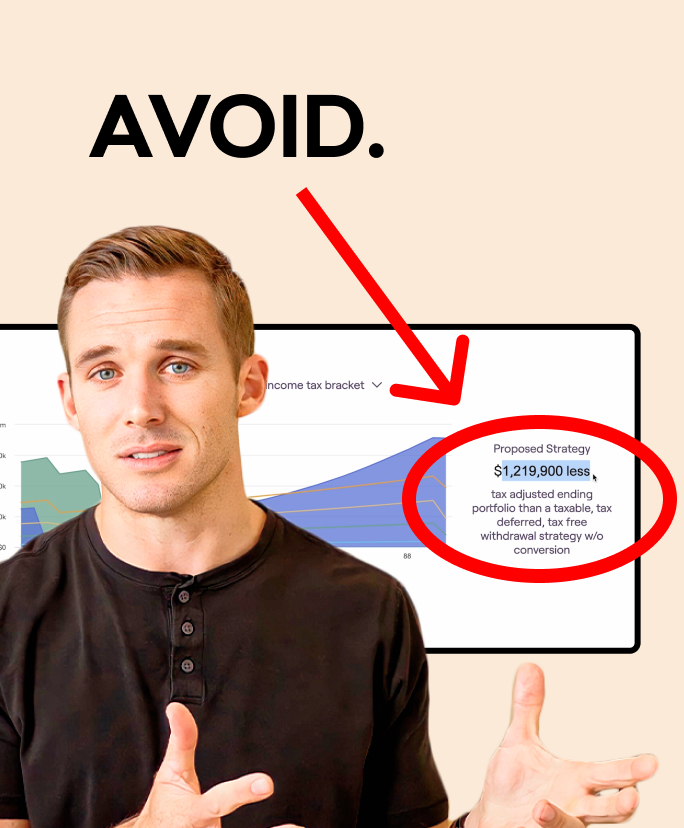Most people think successful retirement planning is about numbers.
How much have you saved? What’s your withdrawal strategy? Is your portfolio positioned to weather the next downturn? These are all important questions, and I’ve built my career helping people answer them well. But if that’s all you’re focused on, you may be setting yourself up for disappointment—because retirement isn’t just a financial transition. It’s a life transition. And most people aren’t prepared for it.
The number one reason people struggle in retirement has nothing to do with money. It’s that they don’t know what they actually want their life to look like.
Why Retirees Struggle—And What to Do Instead
You can have the perfect financial plan. You can optimize your Social Security, dial in your tax strategy, and build a seven-figure portfolio. But none of that matters if you retire into a life that feels directionless.
We see this all the time. People set financial goals because those are the goals they know: contribute to a 401(k), retire by 65, delay Social Security until 70. Then they get there and freeze.
Why? Because they’ve spent 30 or 40 years grinding—working, raising a family, keeping up with responsibilities—and somewhere along the way, they lost touch with who they are and what they actually want.
So when it’s finally time to retire, they default to mimicking what they see others doing. Luxury travel. Country clubs. Golf memberships. And while those things may bring real joy to some people, if you haven’t done the work to define what you want, you’ll wake up one day and realize the retirement you built isn’t actually yours.
The Hidden Identity Crisis
Here’s what’s really going on behind the scenes. For many people, their job isn’t just a job. It’s their:
- Structure: A daily rhythm that gives purpose.
- Community: Coworkers, clients, and professional networks.
- Identity: A source of pride and meaning.
When that disappears overnight, you’re not just losing a paycheck. You’re losing the scaffolding that’s supported your sense of self for decades.
Even people who have plenty of money can struggle with this. Because money can’t replace purpose. It can’t give you direction. It can only support the direction you’ve already chosen.
And that’s why financial planning has to start with life planning.
Start With Clarity—Not Just Cash Flow
When you think about retirement, don’t start with the question, “What do I want to do in retirement?” That’s too big. Too vague. Too overwhelming.
Start with something simpler: What do I want each area of my life to look like?
Here are a few categories to consider:
- Relationships: Who do you want to spend your time with?
- Health: What does your physical well-being look like?
- Hobbies: What activities bring you joy or energy?
- Faith or spirituality: Is that something you want to lean into?
- Adventure: Does travel matter to you? If so, what kind?
- Purpose: How do you want to contribute or give back?
Write down 1–3 things that are meaningful to you in each category. Not what your friends are doing. Not what social media says is “#retirementgoals.” But what actually gives you joy.
Now, imagine it’s a Tuesday morning in retirement—not a weekend, not a luxury vacation. Just a regular Tuesday. What are you doing?
This is where retirement comes to life. Not in the bucket list moments, but in the daily rhythm. That’s where fulfillment lives—or doesn’t.
A Simple (but Telling) Thought Exercise
Here’s one of my favorite exercises for helping people discover what matters to them:
You get $25,000 in your bank account today. But there’s one catch: You must spend it within the next 7 days. If you don’t, it disappears.
You can’t invest it. You can’t pay down debt. You can’t stash it away for the future.
What do you spend it on?
That’s a surprisingly clarifying question. Because it forces you to ask: What do I value today? What brings me joy, connection, purpose, or peace of mind right now?
It’s not about extravagance. It’s about alignment.
And once you have that clarity, then—and only then—can you reverse-engineer the financial strategy to support it.
Planning Backward From a Life That Matters
Let’s say you love to travel. But the kind of travel you love is hiking in national parks, not flying first class to Italy.
Those are very different retirement budgets.
Or maybe your idea of purpose is volunteering three days a week at a local nonprofit. That’s going to shape how you spend your time and how much income you need.
The mistake I see people make is they pick generic goals—“travel,” “spend time with family,” “give back”—but they never define what those actually look like in real life. And without that clarity, how can you possibly build a financial strategy that supports it?
A financial plan without a corresponding life plan is just a spreadsheet.
Retirement Isn’t the End—It’s the Beginning
Here’s the truth I want you to sit with: Retirement should not be the end of your story. It should be the beginning of your next chapter.
You now have the two rarest ingredients in modern life: time and freedom.
The real question is—what will you do with them?
And if you’re not sure how to answer that yet, that’s okay. You’re not alone. We meet with people every day who say things like:
“I used to love music, but I haven’t picked up my guitar in 20 years.”
“We always wanted to spend a month in the mountains, but I don’t even know where to start planning something like that.”
“I’m so used to taking care of everyone else, I don’t even know what I’d want for myself.”
That’s not failure. That’s just life. And that’s exactly where we come in.
How Root Financial Helps
At Root, our job isn’t just to help you maximize your 401(k) or reduce your tax liability—though we do plenty of that.
Our job is to help you align your money with a life that matters. We want to be your partner not just in finances, but in vision.
What could your life look like if you got out of the “grind” mentality and started thinking with fresh eyes?
What if you had a guide to help you turn those vague longings into a concrete, customized retirement plan?
That’s what we do. And if you’re ready to think bigger—not just about retiring, but about retiring into something—then we’d love to talk.
Final Thought
If you take one thing away from this article, let it be this:
A fulfilling retirement isn’t built on spreadsheets. It’s built on purpose.
So take the time to dream again. Reflect. Reconnect with what makes you come alive. Then, and only then, build your financial plan to support that life.
Because at the end of the day, the question isn’t “Can I afford to retire?”
It’s “Am I living the life I was meant to live?”
If you’re ready to talk about what your retirement could look like—and want to make sure your financial strategy is built to support it—start a conversation with us at rootfinancial.com/start-here.
The information presented is for educational and informational purposes only and should not be construed as personalized investment or financial advice. The content discusses general retirement planning strategies and is not intended to recommend any specific course of action for any individual.
Examples provided are hypothetical and for illustrative purposes only. They do not reflect any specific client situation and should not be relied upon for investment decision-making. Past performance of investments is not indicative of future results. All investing involves risk, including the potential loss of principal.
Root Financial Partners, LLC provides tax planning as part of its financial planning services. However, we do not provide tax preparation services, represent clients before the IRS, or offer legal advice.
Clients should consult their CPA or attorney before implementing any tax or legal strategies discussed. Nothing in this content should be interpreted as a recommendation to take a specific tax position or legal action.


